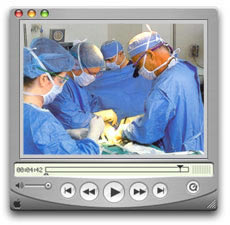Tubal Ligation Side Effects
If you have been doing research about having your tubes tied before having the surgery, then you are smart. Most women, however, don't do any research. They just know it's the most popular form of permanent birth control and just go for it. After all their doctors have told them it's popular and completely safe. Unfortunately, many of them find out later, after the symptoms start, about some tubal ligation side effects called Post Tubal Ligation Syndrome.
But let's say you are looking for information ahead of the surgery and you have run across mention of post tubal ligation syndrome. Doesn't sound like much fun, does it? So you are probably wondering just who is at risk of suffering from this condition and what causes it. If you have already had your tubes tied and are suffering it, you may also want to know what can be done to relieve the problem which is below.
Who is at risk?
Risk factors that some study has been done on resolve down to two things - what type of tubal ligation you have and your age.
In an interview at the International Pelvic Pain Society conference with Dr. Ahmed El-Minawi, Ph.D., we learn that women who have had what he calls more destructive forms of having their tubes tied are the ones at higher risk to suffer from ptls. The methods which cause the most damage to the mid-segment of the fallopian tubes such as with the Pomeroy or Irving-type procedures fall in this category. Also included are the coagulation methods with a bi-polar coagulation, or as we laymen call it, cauterization, being the more destructive.
Additionally, women who are in the 20s when they have their tubes tied are at greater risk of having menstrual disorders. That's from one study which looked at women who had tubal ligation vs. those who did not and who ended up in the hospital with menstrual disorders. Women in their 20s were 6 times more likely to go. To put it another way, that's 600% over the normal population.
While looking at the above two paragraphs might make you think, "Hey, I'll just wait till I am 30." and to be sure to get rings or clips to tie your tubes, that just is no guarantee that you won't get post tubal ligation syndrome. Why? Well, that leads to the next part.
What causes post tubal ligation syndrome?
This part I have to start with a warning. We really don't know what causes ptls at this point in time. It really needs research, real studies, by researchers who don't go into these studies with the idea that ptls doesn't exist. I've read some of the abstracts and conclusions of studies already done and even when a study shows that something is going on, it's discounted on various grounds. As the old saying goes, "I'll see it when I believe it." Personally, I have just read too much from women who are suffering from post tubal ligation syndrome not to believe something is going on.
So the present theories, including from one doctor who was involved in this field for ten years, is that when the tubes are tied, the blood supply to the ovaries is damaged. It can even be cut off entirely which can cause ovarian isolation which leads to atrophied ovaries. When either of these happen, your body isn't going to get the right amounts of the hormones you need. Or you can get the right amount of one and not enough of another leading to hormonal imbalance.
The other theory is that even when the blood supply is just fine, damage is done to the receptor cells which can lead to this failing of the hormones again. These cells carry the messages about the hormones. Messages don't get through; hormones don't get through, at least not in the right amounts.
Basically, the main theory that however it is done, the hormones get all messed up which lead to a woman suffering a whole host of problems which make up the symptoms of post tubal ligation syndrome (check other articles about the list). This is why many women upon complaining to their doctor of their new symptoms end up on birth control pills. It's either that or a hysterectomy in most cases which leads to its own list of problems.
But if you really want to do away with ptls, your best chance of recovery lies in having a tubal reversal. Dr. Berger of the Chapel Hill Tubal Reversal Center began collecting statistics (only tubal doctor I know of who does this) when he realized how many women were coming to him for tubal reversals in order to relieve their symptoms of ptls. He can now say he has a 90% success rate in helping women recover from post tubal ligation syndrome.
What this means is that if you do go ahead with having your tubes tied and you end up in the unlucky 37% or so that have post tubal ligation syndrome, if you choose, you do have a way out. But please check more into ptls before you go ahead with your tubal ligation first.


No comments:
Post a Comment